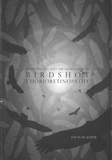Novel insights into the pathogenesis of Birdshot chorioretinopathy

Kuiper, Jonas
- Promoter:
- Prof.dr. A. (Aniki) Rothova
- Co-promoter:
- Dr. T. (Tuna) Mutis
- Date:
- February 13, 2014
- Time:
- 12:45 h
Summary
Birdshot chorioretinopathy (BSCR) is a rare and poorly understood form of autoimmune uveitis that can lead to severe visual impairment. Intriguingly, >95% of cases carry the HLA-A29 allele and defines the strongest documented HLA association for a human disease. To better understand the underlying pathophysiology we investigated the ocular microenvironment, the role of T cells, and the identification of additional genetic markers. Patients showed elevated intraocular levels of pro-inflammatory cytokines TNF-alpha, IL-1-beta, IL-6, IL-2 and particularly IL-17. Interestingly, IL-17-specific cytokine responses and the induction of T helper 17 cells were observed in peripheral blood mononuclear cells of patients stimulated with human ocular antigens.Also, intraocular T cells (derived from vitreous fluid during pars plana vitrectomy) were shown to be directed against human retina and choroid extracts. This substantiates the emerging concept of autoreactive T cells that specifically target the eye in the pathophysiology of BSCR. Finally, we present the first genome-wide association study of this extremely rare eye disease. We show that the MHC association is conferred by HLA-A*29:02 with unusually large effect size. More importantly, we identify an ERAP2 risk allele that increases mRNA and protein expression levels of ERAP2. The dual association between a specific HLA-A allele and ERAP2 implicates a role for peptide processing and antigen presentation in the disease mechanism.